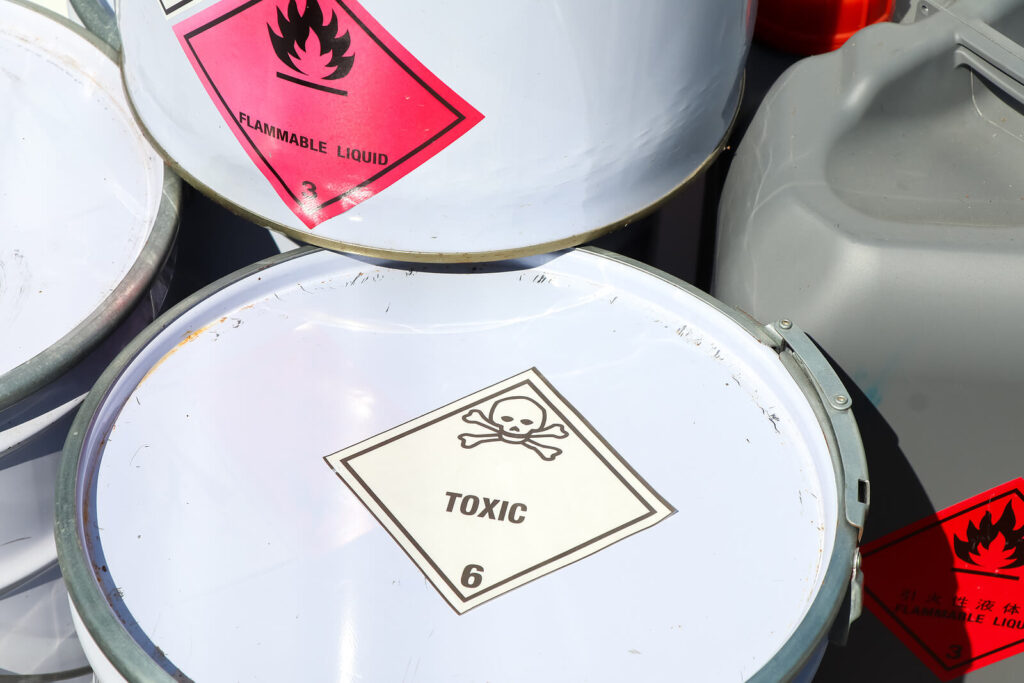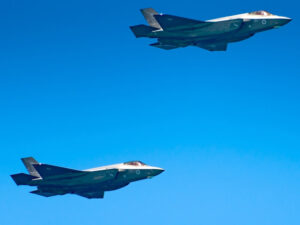Battlefield success depends on a variety of factors, including intelligence-driven strategies, well-prepared combat and non-combat personnel, effective risk management, medical resources and more. The risks faced in modern combat missions change constantly depending on the theater of operations.
One growing threat that military commanders need to consider in their operational strategy is the presence of toxic industrial chemicals (TICs).
TICs are chemicals widely used for a variety of legitimate purposes, from fertilizers to batteries. Used properly and in their correct quantities, and if disposed of correctly, they pose negligible risk to humans or the environment. As such, they are not subject to onerous import restrictions or inspection.
However, when the chemicals used in producing these commercial solutions are available in massive quantities and used or disposed of inappropriately, they pose a danger to the population and environment and can be a risk to battlefield success.
An example from the current Ukraine conflict is nitric acid, used in the production of fertilizer, although different processes may also use sulfuric or phosphoric acids. Ukraine had a growing chemical industry (worth about $12.7 billion in 2021) prior to its war with Russia, and fertilizer was one of the products manufactured. The destruction of fertilizer production plants, intentionally or not, releases numerous chemicals into the environment in liquid or vapor form, which can hamper military operations and cause injury to personnel – either causing immediate injury or long-term second- and third-degree effects.
According to a recent report by PAX, a Netherlands-based non-governmental organization, 61 fertilizer production plants, storage silos and large-scale farms in Ukraine have been bombed thus far during the conflict. Although Russia has not officially accepted responsibility, the organization notes, “Hazardous substances from these facilities poison the environment by air, surface water, soil, and groundwater, which can result in acute toxicity effects on humans and other species and outbreaks of various diseases.”
PAX added that, “about a quarter of all Ukrainian agricultural land area is occupied and an even larger share has been destroyed or polluted.”
The impact of TICs is demonstrated in these statistics, not only the immediate human threats but also the long-term environmental effects that will result in further dangers to people.
Both sides in this war stand accused of such actions, with the Russian Defense Ministry claiming Ukraine damaged a pipeline used to transport ammonia fertilizer from Russia via Ukraine. The Ukrainians’ subsequently said Russia was responsible, but the damage had already been done, with an unknown number of civilians injured.
Deliberate weaponization of toxic industrial chemicals
Naturally, there is the additional risk of the enemy purposefully weaponizing these easily obtained chemicals to delay their opponents’ strategic combat plans and cause havoc by forcing commanders to assign more personnel and resources to deal with the impact of TICs exposure. Even legitimate civilian hospitals are resources of certain chemicals that can be repurposed for military operations. ISIS is a good example of militias effectively using commercially available chemicals as weapons of opportunity.
While we focus on the military risks of TICs, they are also dangerous to civilians in war zones, and the environmental impact can be long-lasting.
Another benefit of TICs for those with nefarious intent is that it is difficult to attribute responsibility for their use. Often, an incident would be cataloged as an accident or collateral damage. This is especially true in a modern battlefield such as Ukraine where there are so many parties involved in the war on both sides.
Challenges on the field of battle
Ideally, when a military commander is tasked with territorial advances or some form of operation, the “real estate” in question should be assessed for TICs on the ground or in vapor form. If identified, action can be taken to remediate the situation, which in most cases is not difficult.
But while the presumptive identification ability to discover and deal with TICs exists in most Western militaries through their CBR (chemical, biological, and radiological) teams, not every military formation includes these capabilities.
It is therefore of critical importance that military strategists and the commanders on the ground initially include a CBR assessment of the territory in focus and ensure the presumptive analysis technology and trained technical resources are available before operations begin. In a war scenario this is not always possible as there are times when action or reaction is required immediately, and other threats may outweigh the TICs risk.
Even in these situations, once the objective is accomplished the technical teams should be sent in to survey the area. The more dangerous chemicals may be evident in combat personnel before that can take place, but many TICs will have delayed effects which can be mitigated if discovered as soon as possible.
Better tactical decision making
Apart from scenarios where immediate action is required, presumptive analysis and identification of TICs in operational areas helps to inform tactical decision making and strategies as much as other forms of information, such as reconnaissance, satellite imagery and intelligence on enemy resources and tactics and more. Information on non-kinetic threats (as opposed to traditional kinetic threats such as bullets, landmines, artillery etc.) cannot be ignored as the effects of these often-unseen dangers can be just as lethal.
The correct situational awareness will assist commanders in making the right decision and ensuring the operation is supported by the correct resources. It may be a case of combat troops using personal protective equipment (PPE) when they engage the enemy. This will also cause commanders to adapt their battle strategy as PPE will degrade communications after a few hours and restrict the movement of soldiers to a degree.
Presumptive identification will also ensure that medical personnel are aware of what potential injuries they may have to deal with and prepare accordingly. In cases where civilians are caught in cities and towns in the operational area, it can also assist in helping the population avoid contamination, or to assist them medically.
The optimal strategy
When military action is required, the optimal strategy is the quick, lethal introduction of force into an area with the goal of causing the enemy to surrender (or defeating them). The presumptive identification of TICs in the operational area supports this goal by allowing commanders to plan more effectively and avoid unpleasant surprises once engaged.
When the optimal strategy fails, possibly because of the unexpected impact of TICs, the result can be a war of attrition where objectives are not met and both sides are embroiled in an endless loop of attacking or defending with heavy losses and no clear path to success, such as the situation in Ukraine.
In combat operations, the priority is to win. In some cases, TICs may be deemed an acceptable risk and the leadership accepts that it will have to deal with the immediate impact or potential second- and third-degree effects after exposure. The critical factor is to have TICs presumptive identification capabilities on board during the strategic planning phase. This will assist those in command to understand what risks they and their personnel face, helping them to make better decisions in order to achieve their objectives in the shortest time and with minimal losses.







